
| Publisher: | Harper | |
| Genre: | General, Fiction | |
| ISBN: | 9780062024381 | |
| Pub Date: | August 2011 | |
| Price: | $24.99 |
| Fiction |
by Helen Schulman
Schulman (A Day at the Beach) has created a cautionary tale focused around a timely issue: an e-mail that goes, unhappily, viral.
Fifteen-year-old prep school student Jake Bergamot, his parents, Richard and Lizzie, and his adopted Chinese six-year-old sister, Coco, have recently moved from Ithaca to Manhattan, where Richard is now senior executive vice chancellor of Astor University of the City of New York, working on a project that will reclaim real estate, create jobs and schools and all the good stuff that everyone wants.
Jake goes to a party that he doesn't particularly want to attend, has too much to drink and is hit on--hard--by his eighth-grade hostess, Daisy. Jake's friends razz him about robbing the cradle, and he extricates himself from her clutches, bolting for the subway and home.
The next morning he turns on his computer and finds an e-mail from Daisy, a video so frankly pornographic it is like nothing he has ever seen. He quickly sends it to his best friend, who sends it on, who sends it to... within hours, around the world it goes.
Suddenly, Richard Bergamot's boss tells him to stay underground "until this all blows over." No one wants someone whose kid has screwed up so publicly making decisions for their children. Meanwhile, Lizzie and Coco experience public humiliation at a high-toned Plaza Hotel slumber party in the aftermath of Jake's error in judgment. Schulman has written an incisive exploration of a family owning up to what each of them really wants and what it will cost all of them. --Valerie Ryan

| Publisher: | Overlook Press | |
| Genre: | General, Fiction, Coming of Age, Family Life, Historical | |
| ISBN: | 9781590204627 | |
| Pub Date: | August 2011 | |
| Price: | $24.95 |
| Fiction |
by Julie Drew
Anne Dodge, the only daughter of an old-money New England family, is not your typical blue-blooded 1930s gal. Not only is she half Portuguese, she's terrible in the kitchen and doesn't have the slightest interest in marrying the besotted son of a prominent family.
In Julie Drew's debut novel, set in Rhode Island in 1934, Anne is in love with one thing--building boats. It's so unladylike that her controlling, WASP father refuses even to discuss it with her, in the same way that he is mum on the subject of what happened to Anne's Portuguese mother, telling her only that she abandoned them when Anne was born. So Anne trudges along in her life, sneaking off to build her beloved boats and dreading the time when she'll have to give up her passion and surrender to her duty as a wife.
Unexpectedly, several events rock Anne's insular world. First, she stumbles upon a dead body. Next, her feisty half-sister, Maria Cristina, who's been raised by the Portuguese side of the family, comes to live with her, unleashing a love and determination in Anne that gives her the impetus to claim her independence. And Maria Cristina's arrival leads to the revealing of long-hidden truths about Anne's mother and father.
Drew's subplot regarding labor unions and a strike at the town mill seems a bit out of place here, but it introduces the powerful and debonair Oliver Fielding who awakens a desire in Anne that changes her life, irrevocably, as the tale sails into its surprising conclusion. --Natalie Papailiou, author of blog MILF: Mother I'd Like to Friend

| Publisher: | Bloomsbury | |
| Genre: | General, Fiction, Literary | |
| ISBN: | 9781608194834 | |
| Pub Date: | August 2011 | |
| Price: | $15 |
| Fiction |
by Joanna Briscoe
Betrayal, obsession and the rituals of seduction are familiar territory for British writer Briscoe, who mined all three successfully in Sleep with Me. Here, she ups the ante considerably by making one of the seducers a 17-year-old girl, Cecilia, whose object of obsession is her married teacher, James Dahl.
This takes place in a progressive school, Haye House in Dartmoor, where children are allowed to make their own choices--and mistakes. Cecilia's parents, hardworking Dora and feckless Patrick, who putters about making pots but no money, have moved there to live the countryside idyll. They end up taking in hippie boarders to make ends meet and Dora, frazzled and unhappy, makes her own unfortunate alliance with the last person she ever expected to care for: the cool and elegant Elisabeth Dahl, wife of James. Dora has no prior record of lesbian attachment but tumbles into a physical relationship with Elisabeth, with whom she is besotted.
There are predicable consequences to Cecilia's actions, which haunt her through the years. Twenty years later, Cecelia, now in her 40s and a children's writer, returns to Devon with her partner, Ari, and their three daughters, ostensibly to care for Dora, now ill with cancer. Cecilia gives in to her need to find answers about the past, to the point where she almost loses one of her children through neglect and inattention. She also reconnects with James Dahl, still teaching in the area, and the stability of her present life is threatened.
The resolutions of these highly charged affairs take a good deal of hand-wringing angst to accomplish, and while the answers may not be entirely satisfactory, they are altogether believable. --Valerie Ryan, Cannon Beach Book Company, Ore.
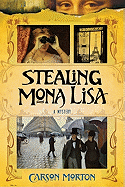
| Publisher: | Minotaur | |
| Genre: | Crime, Fiction, Mystery & Detective, Historical | |
| ISBN: | 9780312621711 | |
| Pub Date: | August 2011 | |
| Price: | $25.99 |
| Mystery & Thriller |
by Carson Morton
Carson Morton's first novel employs a delightfully murky moral standpoint. The protagonist is Eduardo, the Marquis de Valfierno, who heads up a gang of clever con men in Argentina in the early 1900s. Taking advantage of the shameful lack of security in the National Museum, Valfierno has concocted a brilliantly simple plot to swindle American businessmen. He offers to sell them paintings stolen from the museum, but delivers masterful forgeries instead. Not the noblest line of work, but once we meet the newest client, railroad tycoon Joshua Hart, it's clear that swindling is exactly what he deserves.
When a change of circumstances, and perhaps a lingering affection for Hart's beautiful young wife, land Valfierno in Paris, he plans his most ambitious project yet: the theft of the Mona Lisa. With Hart and the French police pursuing him, the action culminates in a chase through the streets of Paris, as the waters of the Seine spill over their banks and flood the city.
Morton bases his work on a myth surrounding the actual theft of the Mona Lisa in 1911. Many years after the painting was recovered, an article appeared in the Saturday Evening Post describing the author's meeting with a man named de Valfierno, who claimed to have commissioned the theft in order to pass off several forgeries as the real thing. Despite being completely unsubstantiated, the story has persisted throughout the years and, in Morton's capable hands, has been crafted into an engaging and atmospheric novel. With richly drawn characters and careful pacing, Stealing Mona Lisa is a work of art in its own right. --Judie Evans, librarian

| Publisher: | Putnam | |
| Genre: | Fiction, Thrillers, Action & Adventure, War & Military | |
| ISBN: | 9780399157790 | |
| Pub Date: | August 2011 | |
| Price: | $25.95 |
| Mystery & Thriller |
by Thomas W Young
Four years after the events of Thomas Young's first novel, The Mullah's Storm, Army Sgt. Major Sophia Gold and Air Force Major Michael Parson are reunited when a bomb destroys the Afghan National Police central training facility in Kabul. Gold is helping to run the literacy program and sustains minor injuries in the blast. However, many of her students are badly injured and she's going to accompany them to a hospital in Germany that is large enough to handle all the patients. Parson is called on to fly the patients to Germany, which is a routine matter--until a bomb is discovered aboard the aircraft.
Readers unfamiliar with The Mullah's Storm will have no problems following the events of Silent Enemy. The pace is quick; there's constant action and well-timed twists. Young treats the array of characters and cultures with dignity, avoiding any hidden agendas in his themes. Some readers may find the technical elements of the aircraft piloting a bit daunting, but they play a minor role in the overall story.
Young's experience as an Air National Guardsman serving in the Middle East works to heighten the authenticity in this exciting military thriller. But don't read this on the plane heading off to vacation. Wait until you've hit the beach. --Jen Forbus of Jen's Book Thoughts
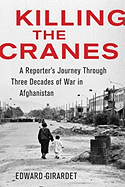
| Publisher: | Chelsea Green | |
| Genre: | General, History, Asia, Central Asia, Middle East | |
| ISBN: | 9781603583428 | |
| Pub Date: | August 2011 | |
| Price: | $27.95 |
| Nonfiction |
by Edward Girardet
Edward Girardet (Afghanistan: The Soviet War) came to Afghanistan more than 30 years ago as a reporter for the Christian Science Monitor, embedding himself with mujahideen fighting the Soviets. He saw the Russians leave and the Taliban move in, and recognized immediately the connection between the assassination of Massoud, the Lion of Panjshir, on September 9, 2001, and the attacks on the U.S. two days later. The author has a profound love for the Afghanis, giving him the edge over almost any other outsider; and his deep experience and understanding of the people and the country.
There are "no military solutions" in Afghanistan, said General Boris Gromov, the last Soviet commander to leave Afghanistan. However, the U.S. spends an average of $2.8 billion a week there, and NATO reports security forces cost an estimated $6 billion annually. Outsiders throw billions of dollars of aid at Afghanistan, but a new, ugly culture of greed has emerged over the decades: in 2010, some $18 billion of U.S. aid alone has disappeared into the "labyrinth of contract bureaucracy."
What would work? Girardet offers what he says are obvious, but neglected answers: quality over quantity; small, doable projects; a long-term commitment--years, if not decades; reduced dependency on private security and mercenaries; better infrastructure, health centers, public transportation; working in the countryside, not just in cities. Finally, he writes, Western donors need to move beyond "hollow words.... They need to actively pressure Pakistan, Iran, China, India, Saudi Arabia, and others to stop meddling in Afghani affairs. This has been, and continues to be, the principal obstacle to peace in Afghanistan." --Judith Hawkins-Tillirson, proprietress, Wyrdhoard Books, and blogger at Still Working for Books
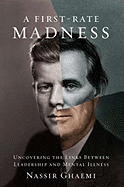
| Publisher: | The Penguin Press | |
| Genre: | Political Science, General, Biography & Autobiography, Psychology, Mental Health, Historical, Political Process, Leadership | |
| ISBN: | 9781594202957 | |
| Pub Date: | August 2011 | |
| Price: | $27.95 |
| Nonfiction |
by Nassir Ghaemi
Consult any list of the traits that make a person fit for crisis-time leadership, and you're not likely to see "mentally ill" on it. In A First-Rate Madness, Nassir Ghaemi, a professor of psychiatry and director of the Mood Disorders Program at Tufts Medical Center, contends that perhaps that shouldn't be the case.
Applying principles of modern science and psychology to character studies of eight prominent historical leaders, Ghaemi argues that "in times of crisis, we are better off being led by mentally ill leaders than by mentally normal ones." Ghaemi identifies four elements of mental illness that promote crisis leadership--creativity, realism, empathy, resilience--and examines their manifestation in the lives of leaders who suffered from depression or bipolar disorder, leaders like Winston Churchill, Mahatma Gandhi, Abraham Lincoln and John F. Kennedy.
Ghaemi draws from public records and private documents to present data about each man's symptoms, family history, course of illness and treatment. He lays out his theory using language that is accessible, if not entirely jargon-free, and illustrates his case studies systematically and succinctly to establish a compelling argument for the link between certain types of mental illness and crisis-time leadership. The keyword here, though, is "link," and Ghaemi strays at times from the proviso that "correlation does not equal causation" to imply a more directional relationship than the evidence supports. Readers who bring both a passing familiarity with psychology and a healthy skepticism will find much food for thought in A First-Rate Madness. --Rebecca Joines Schinsky, blogger at The Book Lady's Blog

| Publisher: | Riverhead Books | |
| Genre: | Travel, General, Sociology, Biography & Autobiography, Social Science, Asia, Urban, China | |
| ISBN: | 9781594487842 | |
| Pub Date: | August 2011 | |
| Price: | $26.95 |
| Nonfiction |
by Tom Scocca
Journalist and blogger Tom Scocca followed his wife (and her new job assignment) to Beijing in 2004, arriving just as the city was beginning its preparations as future host of the Olympic Games. Though Beijing Welcomes You looks backward to an important transitional time in China's ascent to global power, it follows a mostly forward path through the city's countdown to the Games. (The book's title refers to a popular Chinese song written to promote the Games.)
Luckily for the reader, Scocca is industrious and, frankly, brave in both his journalistic and touristic travels in Beijing. He studies the scientific attempts to control the weather and the air quality of the city, and considers the behavioral modifications recommended to Beijing's citizens (control of spitting and the formation of orderly lines seemed to be primary goals). He appreciates the architectural achievements of the new sporting venues and documents the beautification of the new Beijing, often at the cost of the historical charms of the old city. Scocca's tenacity and curiosity led him to interview politicans, scientists, designers, athletes and ordinary citizens, and to participate in Beijing's cultural and civic offerings, all of which clearly enriched his story.
Beijing Welcomes You is an entertaining account of the city's transition into the future, prompted by the social, political and environmental challenges of hosting the Olympic Games. --Roni K. Devlin, owner of Literary Life Bookstore & More
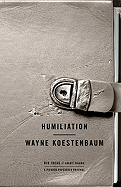
| Publisher: | Picador | |
| Genre: | Emotions, General, Psychology, Biography & Autobiography, Social Science, Popular Culture, Personal Memoirs | |
| ISBN: | 9780312429225 | |
| Pub Date: | August 2011 | |
| Price: | $14 |
| Starred | Nonfiction |
by Wayne Koestenbaum
Few rational people would want to know what it feels like to be disgraced former New York Congressman Anthony Weiner. But the universality of shame, disappointment and even the odd pleasure in another's disgrace provide fertile territory for poet and critic Wayne Koestenbaum in this provocative study of humiliation.
There's ample material here to engage aficionados of pop culture, from a discussion of Alec Baldwin's ranting voice-mail message to his adolescent daughter, to television shows like The Swan, a Fox reality program featuring "disturbed women [who] ask to be humiliated on television so that they might end up beautiful." Through myriad examples, Koestenbaum raises the legitimate question whether our eagerness to exult in the humiliation of others defines contemporary American culture.
Koestenbaum doesn't confine himself to stories ripped from the pages of Us Weekly. It takes some patience to follow the thread of his argument when Humiliation veers off into discussions of relatively obscure artists like Antonin Artaud and Glenn Ligon, or discourses on terms like "abreaction" and "desubjectification."
But it isn't long before this academic author again startles with a bold argument, some elegant turn of phrase or a striking anecdote that steers his account back to more accessible, ground--as with his assertion that humiliation can be "a kiln through which the human soul passes, and where it receives burnishing, glazing, and consolidating."
Anthony Weiner is merely one more example, as Koestenbaum reminds us, that "there will always be another public figure falling, another man... to confess, in public, a shameful act, and to submit to the televised spanking." Even as we recognize the wearying inevitability of this behavior, it's fair to ask whether our near obsession with their debasement says as much about us as it does them. --Harvey Freedenberg, attorney and freelance reviewer
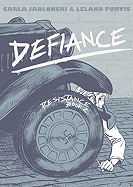
| Publisher: | First Second | |
| Genre: | General, Comics & Graphic Novels | |
| ISBN: | 9781596432925 | |
| Pub Date: | July 2011 | |
| Price: | $16.99 |
| Children's & Young Adult |
by Carla Jablonski, illust. by Leland Purvis, color by Hilary Sycamore
With the rise of graphic novels as a valuable tool in the classroom, we've seen more comics for teens with a historical focus. Defiance and its prequel, Resistance (2010), are two of the best to appear on the scene.
Both are set in a small French village in Vichy, France, after France's surrender to Germany in WWII, and focus on the Resistance efforts of the Tessier family. By the time Defiance begins, the German army has taken over their village. Fourteen-year-old Paul uses his drawing talents to fight back against the occupation by making propaganda, and his mother and sisters help the maquis living in the Jura mountains and the Resistance in any way they can. Meanwhile, Paul's aunt has decided it's smartest to side with the Nazis.
In retrospect, it seems easy to declare the good guys and the bad guys in this struggle, but one of the strengths of this series is that Jablonski explores the grey area. She elevates the book into the realm of a great story that just happens to be set 60 years ago. Jablonski does not over-explain the situation, and instead lets the characters, particularly the teenagers, drive the action.
Combined with Purvis's active art, especially the panels in which he draws in the fashion of Paul, this stimulating story sheds much-needed light on a brave episode of history rarely discussed in this country. --Stephanie Anderson, manager of WORD bookstore in Brooklyn, N.Y.

| Publisher: | Abrams/Amulet | |
| Genre: | Fantasy & Magic, Juvenile Fiction | |
| ISBN: | 9781419700255 | |
| Pub Date: | August 2011 | |
| Price: | $16.95 |
| Children's & Young Adult |
by Jonathan Auxier
Anything can happen in debut author Jonathan Auxier's fantastical world. The 10-year-old hero, discovered as a baby bobbing in a basket, and named by some magistrates "after a misremembered nursery rhyme," overcomes many challenges--including blindness and abject poverty--to earn the title "the greatest thief who ever lived." The captivating omniscient narrator remains mindful of Peter's handicap while extolling the virtues of the hero's highly attuned remaining four senses. He paints Peter as a boy who must steal in order to survive, but who also possesses a heart of gold.
The turning point occurs when Peter meets a haberdasher who can read his mind, and who plants a box containing the "fantastic eyes" of the title, knowing Peter will find them. Each pair of eyes possesses a magical trait that leads to a series of farflung adventures, including a chance meeting with Sir Tode, a human-kitten-horse hybrid under a hag's spell, a desert full of thieves, a vanished kingdom, a giant dogfish named Good Ol' Frederick who helps defeat a school of sea serpents, ravens that could be good or evil, and talking apes on a Night Patrol that chain up children as slaves--among them a princess. Auxier ties them all together so that none feels extraneous or (too) over-the top. Amid the humor and battle scenes, he also raises some searching questions, such as whether modern reason has overridden the ancient need for magic, and what qualities define a true hero. Kids will root for Peter and hope for his return.--Jennifer M. Brown, children's editor, Shelf Awareness

| Publisher: | Putnam Juvenile/Penguin | |
| Genre: | Friendship, Love & Romance, Social Issues, Juvenile Fiction, Pregnancy | |
| ISBN: | 9780399254116 | |
| Pub Date: | August 2011 | |
| Price: | $16.99 |
| Children's & Young Adult |
by Lara Zielin
Trying desperately to escape the label of "the girl who'd run and tell Mommy what she knew about anyone," Aggie Winchester, daughter of St. Davis High's principal, has gone goth to match her best friend, Sylvia, and protect herself from getting hurt again. In her sophomore novel, Lara Zielin (Donut Days) creates a stunningly realistic look at a high schooler's journey of self-discovery.
By the end of the first chapter, Aggie gets the shocking news of her mother's cancer and her best friend's pregnancy. Her mother refuses to leave her post as principal, and Sylvia is convinced the father of her child will support her, even when Aggie tells her he's a jerk. With the arrival of new girl Beth (also goth), Sylvia ditches Aggie, and the upcoming prom has everyone except Aggie excited. The prom queen nominations are announced, and Aggie is surprised to find Sylvia on the list. Sure that the father of her child will care about her again if she is the queen to his king, Sylvia gets desperate and (with the help of Beth) rigs the election by stuffing the ballot box.
The prom queen is announced, and the school is in an uproar. She's not who they voted for, and they know it. Aggie knows more than anyone, and finds herself in the middle of it all with Sylvia and her mom both directly involved.
Zielin captures the attitude of Aggie perfectly as she fights for what's right and learns about herself. --Shanyn Day, blogger at Chick Loves Lit